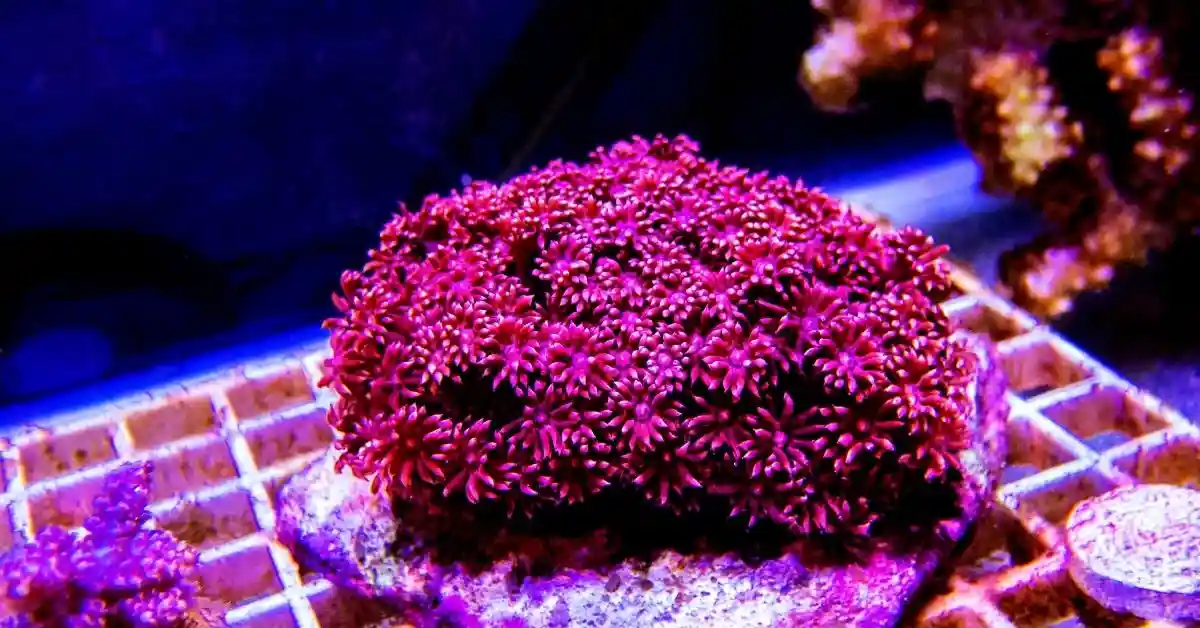There was a time in the past when you bought some flowerpot coral that had just started to open.
They observed that it’s gradually reducing in size until it was only open sometimes, then completely closed.
Some common questions are going through your head. “And so… is this thing dead? Or if it will ever be open again?”
Why is my flower pot coral not opening?
Your coral may not be opening because of changing water. When the alkalinity of the water is raised, corals tend to get closed. Too much lighting is another reason.
To avoid consequences, check water salinity. Adjust the pH level of the tank water. Move your coral to a darker section of the tank.
Check out the whole article for briefings!
One of My Flowerpot Corals is Not Open Up!
Flowerpot Coral other common names for this species include Daisy Coral, Ball Coral, and Sunflower Coral. It has the appearance of a flower bouquet.
Goniopora stokesi, the common ‘flowerpot’ coral, is a ball-shaped coral with long tentacles. It is inexpensive and widely available in aquarium stores.
It isn’t easy to keep, making it a popular choice among aquarium hobbyists.
However, you may have encountered frequent issues, such as corals that won’t open. As a result of your reading this article, you understand why this problem exists.
Coral Isn’t Opening Up When Change The Water
Water quality is the most significant factor affecting the health of coral reefs. Testing your water parameters can help you determine what’s wrong in most circumstances.
Water quality is almost always to blame if multiple corals are dying simultaneously.
If your corals aren’t fully opening, the first thing to check is the salinity of the water.
Corals lack osmoregulation systems. Adaptation to changing salinity is critical for these organisms’ metabolism and long-term survival.
Flowerpot coral, as well as bubble coral, can die because of the excessive salinity in the water. The corals’ unfavorable modifications are a response to their systems’ duress.
Solution
A coral reef tank’s salinity should be kept around 35 ppt (parts per thousand), even if you’re off by just a tenth of a point now and then.
The coral shouldn’t suffer long-term damage because of the error.
Using a refractometer is an excellent low-cost approach for accurately determining the salt content in water. For less than $40, you can buy one.
If the salinity is just too high, just remove little saltwater from the aquarium. Refill it with fresh RO/DI water.
Or add saltwater to refill evaporated water over some time instead of RO/DI. Many substantial water changes may be required if major repairs are needed.
Not Expanding Or Opening Up
Poor water quality could cause your corals’ inability to expand or open up. Coral depends on the presence of calcium, alkaline, and magnesium to thrive.
If these three factors are out of range, your flowerpot corals will suffer.
Alkalinity is one of the most significant elements because it maintains the tank’s pH.
The second offers carbonate and bicarbonate, which are the building blocks of healthy corals. One of the most important aspects of keeping healthy corals is maintaining a consistent alkalinity level.
Slowed growth, loss of color, and closed or retracted corals are all signs of insufficient alkalinity, calcium, or magnesium.
Precipitation and coral damage, excess alkalinity, calcium, and magnesium can also damage your aquarium’s equipment.
Solution
Test the accuracy of digital readouts by using Hanna Checkers to measure alkalinity, calcium, and phosphate. Do a water change of 20% to 25% every day. Adjust your aquarium pH for a healthy environment.
Do it until your alkalinity value is within your target range (8-12 dKH.) Alkalinity levels can be quickly reduced using salt mixes with a dKH of 8 or below.
To maintain a healthy reef aquarium, calcium comes in prior. Calcium is essential for the calcification and growth of corals. The third and last nutrient that corals require to thrive is magnesium.
Corals’ Ability to Open Up Can Be Thwarted by Lighting.
Corals can be harmed by exposure to excessive light—the active radiation produced by photosynthetic processes. New corals are easily killed by placing them in a setting that is too hot or bright.
A coral can shrink and lose its polyps if exposed to too much light. With too much light, a coral might die within a few days. The same reason is responsible for duncan corals not closing.
Corals not getting enough light can show discomfort for weeks before they perish. Corals often stretch out and grasp for the light or turn brown when there’s insufficient light.
Solution
There are a few things to help young corals adjust to their new environment. Find out what kind of PAR your coral prefers before you move it to its final place.
Flowerpot corals and LPS like a lower PAR. Hence they are typically housed in the middle or bottom of a reef aquarium. Flowerpot corals do better in the middle or upper reaches of the tank as their PAR is higher.
Move your coral to a darker section of the tank. Like the edges or bottom, if it struggles. Before moving it again, give it a couple of weeks to rest and recuperate.
Parameters In the Water That Can Keep Corals Opening
Poor feeding and care techniques can slowly degrade water quality. It’s easy to slip into that habit.
Your hands may also include lotions, oils, or soaps, which can wreak havoc on the quality of your tank water. Pollutants can be added to a tank by using aerosols near the tank.
Break out the carbon if you suspect impurities or toxins in the water of your reef tank. Change your carbon or add it to your media reactor, and put a bag in the media tower.
Whichever technique you use, be sure to get some new carbon into the filter system. Remove those toxins from the water. This procedure can also prevent from candy cane coral dying.
It’s time to begin water adjustments if you don’t see improvement in the health of your corals. Over a few days, 30 percent water changes are usually sufficient.
Water changes of 50% or even 90% are necessary if you detect any hazardous accidental contamination. The situation is rapidly deteriorating.
Performing large water changes is preferable to watching your aquarium deteriorate. To minimize stress on your livestock, ensure the water is thoroughly blended and heated.
FAQs
What’s the best way to care for a flowerpot coral?
It demands moderate lighting and water circulation in the aquarium. Add calcium, magnesium, and minerals to the water to ensure excellent health in the long term.
How long can a coral remain shut?
Three days without light won’t harm your corals. But it would be best to keep an eye out for no water movement. It takes two hours for this to become an issue in a densely loaded tank.
Does flowerpot coral enjoy the movement?
With a little bit of irregularity, low to medium flow is ideal for flowerpot coral. So you have that gentle waving motion that keeps the coral clean and feeds the colony.
Conclusion
We’ve covered flower pot coral, not opening issues, and remedies in great depth here. We’re crossing our fingers that this will help you understand the reasons behind it and the solutions.
Test if a new coral is not opening after a few days. You should try it in an area of the tank with less flow. To get the best advice, contact aquarium specialists.

